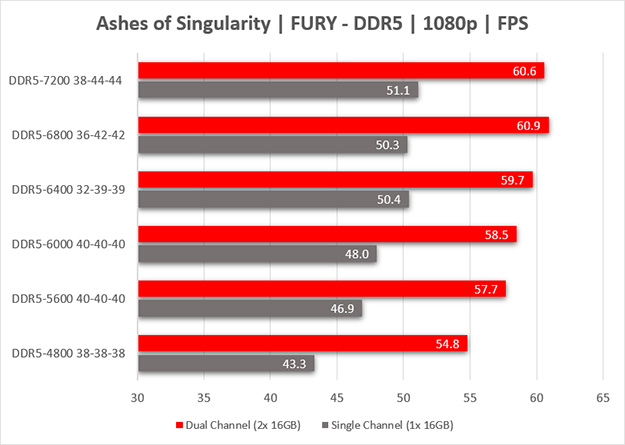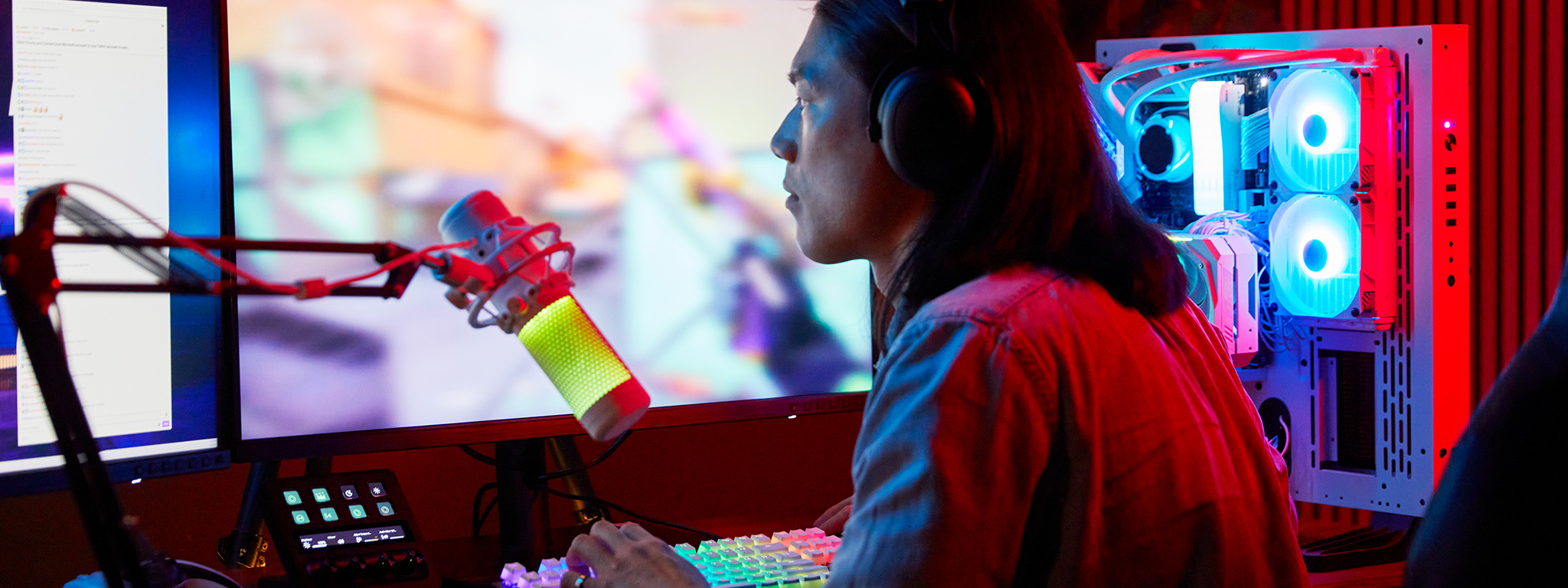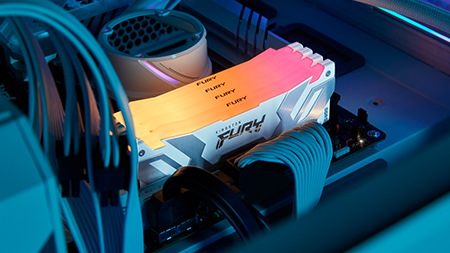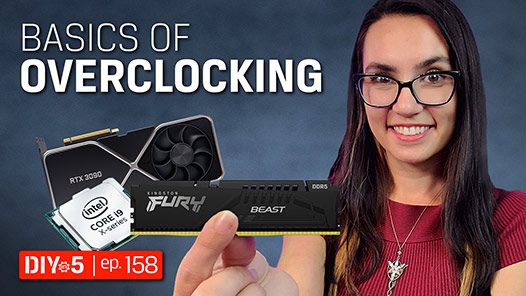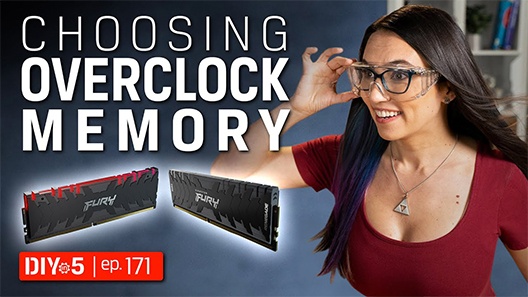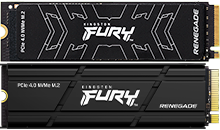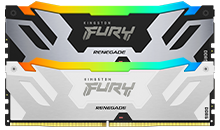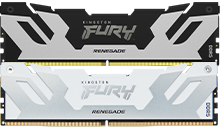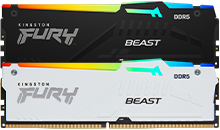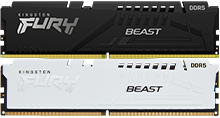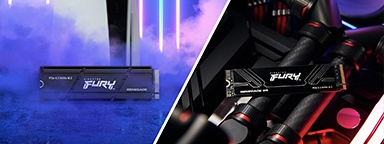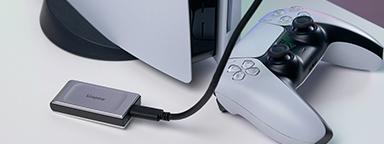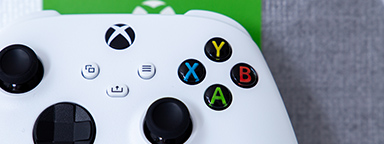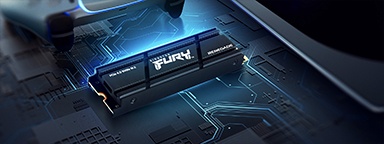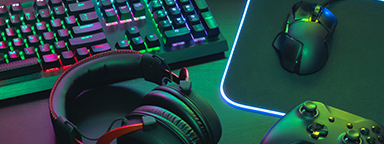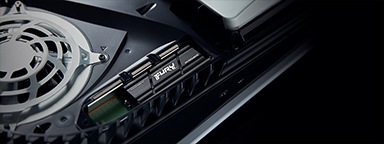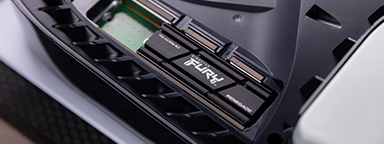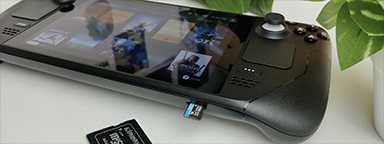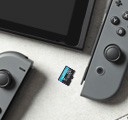These were run at 1080p and under high settings for a level playing field, as not all users will have 4K capable monitors. For most of the titles our benchmarks reflect three scores: maximum FPS (red bar), average FPS (gray bar), and minimum FPS (blue bar). We used a combination of in-game benchmarks and overlays to measure FPS.
Rainbow Six Siege is an excellent choice as a first person-shooter e-sport title, where high frame rates are critical. Our tests showed incremental improvement as memory speed increased, with a marked jump as memory went from 6800MT/s to 7200MT/s.
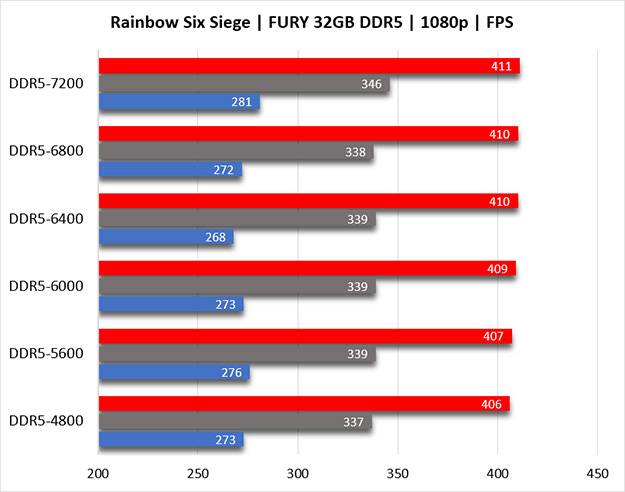
For Cyberpunk 2077, we noted only slight improvements across all speed increases. 7200MT/s saw slightly lower minimum FPS than the rest of the lineup, but no notable difference at maximum FPS, resulting in a marginal average.
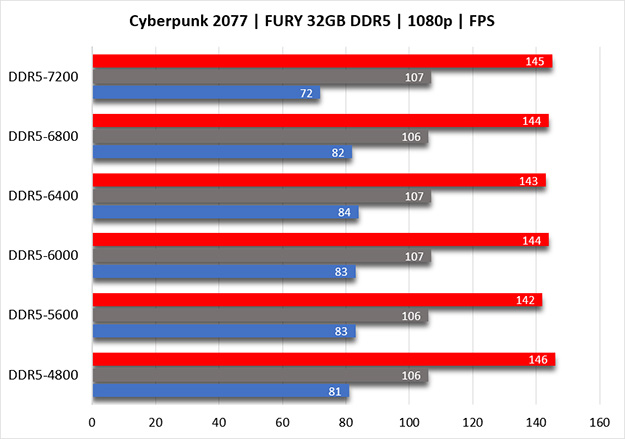
Red Dead Redemption 2 showed a significant range between minimum and maximum FPS, and as we increased memory speed, we only observed a two point increase in the average FPS.
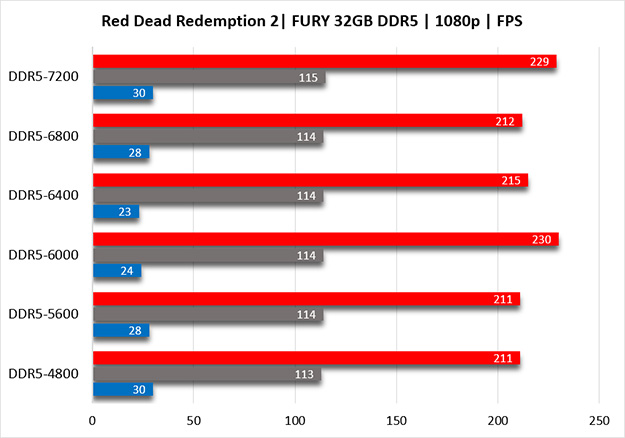
F1 2020 is a racing simulator based on the professional racing series Formula One. All speeds ran at an average FPS of 149 and a maximum of 150. The minimum frame rate did increase as speed increased showing 7200MT/s with a 6 FPS differential compared to 4800MT/s at a 28 FPS differential.

Arma 3 is a popular military simulator with large open maps and various vehicles to be driven. Running through a training course, open and closed spaces were encountered with sporadic gunfire. 4800MT/s lagged behind scoring the lowest average while 5600MT/s scored the highest, beating the Renegade options by 2-6 FPS. The minimum FPS increased as speed increased excluding 7200MT/s.
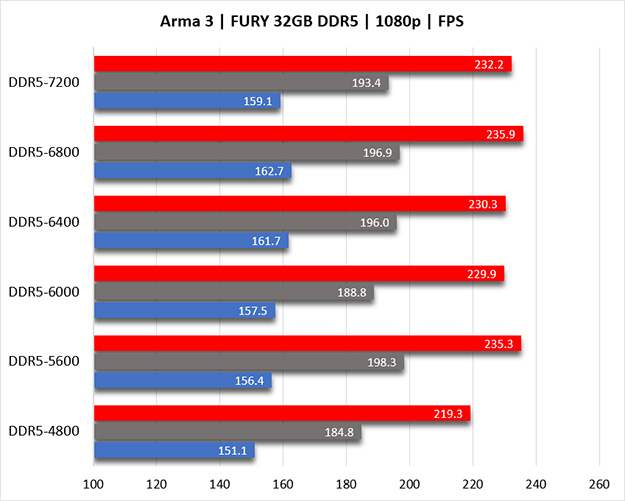
Horizon Zero Dawn was a PlayStation® exclusive that received a PC port a couple of years ago. This adventure game features grand areas and high-quality textures. Average FPS did not vary much between speeds, hovering around the 144 mark. The Beast speeds maintained a higher maximum with 6000MT/s having the highest FPS.
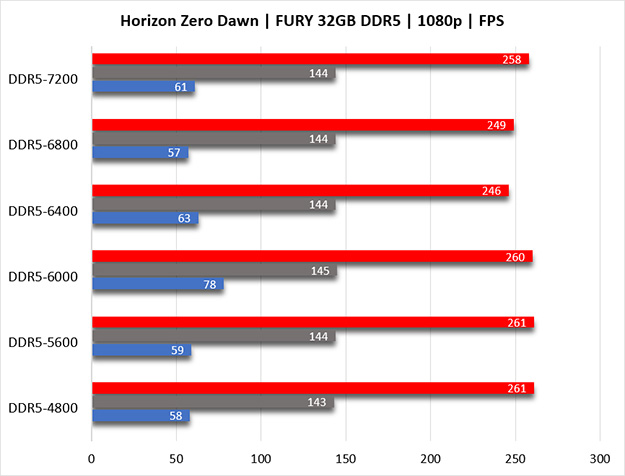
APEX Legends is a popular battle-royale title that features 100 players fighting to be the last one standing. The top Renegade speeds saw a larger drop off in their minimum FPS with 7200MT/s achieving the lowest average. The other speeds saw consistent results, hovering just below a 144 FPS average.
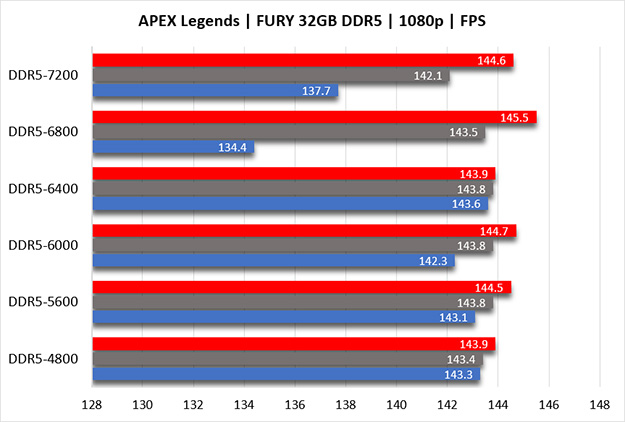
Ashes of Singularity is a real-time strategy game with large-scale battles. Running the CPU-focused test, average FPS increased as speed increased, over 11% from 4800MT/s to 6800MT/s. During this test we were curious just how much of a difference dual channel made over single channel memory configurations. For budgetary reasons, a lot of users may opt to only install one memory module in their system instead of the recommended two. This benchmark illustrated an average 17% difference in FPS performance when compared to the dual channel configuration.
